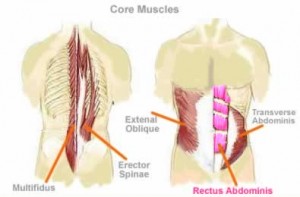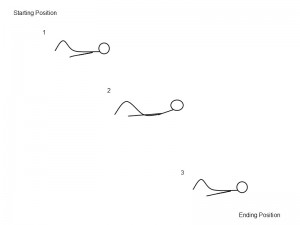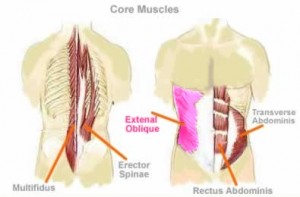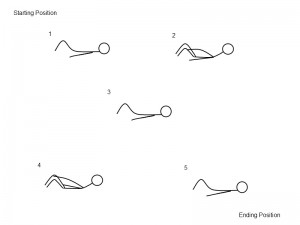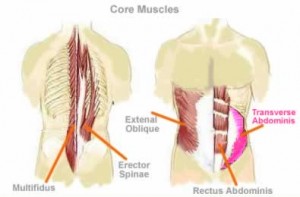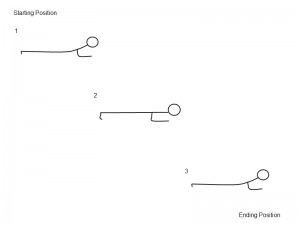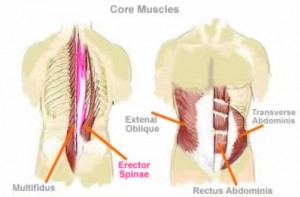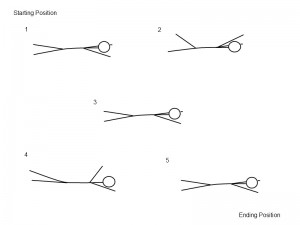Summer has arrived, and for many of us, so has the anxiety of showing everyone what we look like in a bikini. I strongly believe that every body type is beautiful to someone. Everyone is into something different when it comes to who they find attractive. However, that doesn’t mean we couldn’t do with a little extra self-esteem every now and then. This simple exercise program will target not only your abdominals, but also, your level of confidence, which happens to be what people find themselves most attracted to when first meeting someone.
Before we begin, we must go over a few safety precautions. When ever you are performing any exercise, maintaining proper form is crucial for preventing an injury. When doing sit-ups or crunches, it is insanely important to keep your lower back either on the floor, or rounded when it leaves the floor, at all times. You must never arch your back, as this can put unwanted pressure on the blood vessels surrounding the spine. Another important thing to remember while you are exercising is to continue breathing, a shockingly large amount of people forget to breath altogether while they are exercising.
The first exercise we will do is the crunch. To do this you lie down with your back on the floor, placing both feet flat on the floor with an approximated 90 degree angle at your knees. Place your hands flat on the floor or behind your head with your fingertips lighting touching your head behind your ears and your elbows pointing as outward as possible, if you require neck support. You then use your rectus abdominis muscles to lift your torso to the point that your shoulder blades come off of the floor, sliding your hands towards your feet. You can move your chin towards your chest if you like, but you must leave a void between the two that is at least as big as an orange. Next, you use the same muscles to lower your torso back down to the floor. Remember to keep your lower back flat, pushing it into the floor if your have to. This exercise should take four seconds to complete, and should be repeated 8-10 times. After a couple of weeks, or when this becomes too easy, you can progress by increasing the number of repetitions or by adding another set of the same number of repetitions. Eventually you can try increasing the difficulty of this exercise by holding your legs off the ground with a 90 degree angle at your hips, as well as your knees, for the duration of the exercise.
The next exercise to be preformed in series is the rotating crunch. This is done quite similarly to the standard crunch, introduced above. The same starting position is used, but with your hands held behind your head, regardless of your need for neck support. The main difference with this exercise is that you use your obliques to lift your torso to one side of body, crossing over as if you were trying to touch your elbow to your opposing knee. You then return to the starting position and alternate the same motion to the other side of your body, then return again to the starting position. Do not arch your back while performing this exercise, I can’t stress this enough. This exercise should also take eight seconds to complete, and should be done 4-5 times. This exercise can be progressed in the same ways as the standard crunch. When you choose advance to the level where you take your legs off the floor, you will actually be able to touch your elbow to your opposite knee, bringing the required leg towards your elbow, to close the gap.
Our next exercise is the plank. This is a subtle exercise with drastic results. The main muscle targeted with this exercise is the transverse abdominis. This muscle acts like a belt, holding everything in – nice and tight. The plank is done by lying facedown on the floor with your forearms on the floor, shoulder-width apart, thumbs upward. You perform the exercise by coming up on to your toes and holding your body up with your arms, making sure to hold your core (back and stomach) muscles tight. Hold perfectly still in that position for as long as you can, a good duration to aim for is 30 seconds. To progress this exercise you can hold the position for longer or perform multiple sets in succession, resting about 30 seconds in between attempts.
The last exercise is intended to balance out your body. When ever you exercise your abdominal muscles you also need to exercise you’re the muscles of your lower back. If you were to only ever work the muscles of your front, they would eventually become so much stronger than the muscles of your back that you would not be able to stand up straight. The exercise we will use to serve this purpose is the alternating back extension. To perform this exercise you lie facedown on the floor with your arms and legs extended out in front of and behind you, respectively. Then you lift one arm and the opposite leg simultaneously, as high as you can, contracting your erector spinae. Returning to the starting position, you then alternate and lift the other arm and its opposite leg, again returning to the starting position. This exercise should take about four seconds to complete and should be repeated 4-5 times. You can progress this exercise by doing more repetitions or by adding more sets of equal repetitions.
Now comes the stretching. This is an important and often overlooked aspect of an exercise regimen. It doesn’t take much time or effort to stretch your core muscles after a work-out. Each of the following stretches should be held for at least 20 seconds and should be repeated at least twice. You should be breathing though the entirety of each stretch. The first stretch is the standing T-bend. This is done by standing, holding your arms up at your sides forming a ‘T’ shape and bending as far as you can to one side, holding, and then bending to the other side and holding. This stretches your obliques. The second stretch is taken from yoga and is called the prayer pose. Executing this stretch requires sitting on the floor, with your legs bent underneath you. You then lean forward with your arms outstretched trying to get as close to the floor as you can and holding this position. This stretches your erector spinae. The last stretch is called the full body stretch. To do this stretch you simply lie down on the floor on your back and stretch your arms and legs out linearly, as far as you can. This stretches out your rectus abdominis nicely.
This exercise program should be executed 3-4 times a week, in conjunction with your regular fitness routine. Unfortunately, there is no exercise that can give you instant results. Typically, someone will have to wait at least six weeks to see any physical changes. If you use this situation at this moment as your inspiration and motivation, and stick to this program, progressing these exercises and finding additional exercises to incorporate throughout the year, by the next bikini season I guarantee: you will feel excited, rather than anxious, to show your bikini body.

